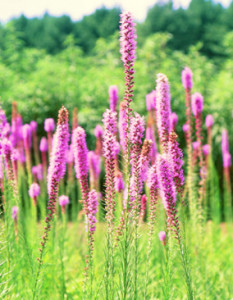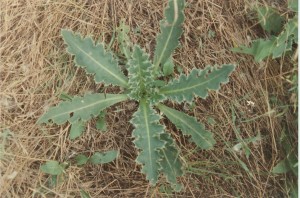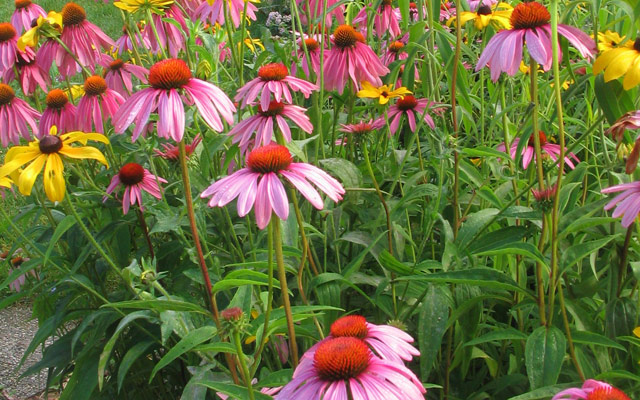This blog is the sixth in our series on native plants and sustainability. We discuss taking care of native plants in your landscape.
 While many homeowners are discovering the benefits that native plants provide in regards to lower maintenance, water needs, pesticide use, and benefits to wildlife, there are tasks in the garden that must be continued to ensure their long-term success. While many natives may be lower maintenance, there is no such thing as a maintenance free planting. It will be necessary to devote some time to upkeep and maintain. A lot of hassles can be avoided in the initial planning phase by selecting the right plant for the right place. Keep in mind what plants prefer sun or shade, different soil conditions, and watering needs. By selecting plants that thrive in similar conditions, it will eliminate a lot of problems in the future. It is also important to consider how much time one has to devote to tasks in the landscape. If free time is at a premium, consider using fewer plant species in large masses. If one anticipates a lot of time to devote to gardening, more intricate plantings with a variety of plant species might be appreciated. The initial planning phase may be the most important steps in determining the success of a native planting and what maintenance needs will be required.
While many homeowners are discovering the benefits that native plants provide in regards to lower maintenance, water needs, pesticide use, and benefits to wildlife, there are tasks in the garden that must be continued to ensure their long-term success. While many natives may be lower maintenance, there is no such thing as a maintenance free planting. It will be necessary to devote some time to upkeep and maintain. A lot of hassles can be avoided in the initial planning phase by selecting the right plant for the right place. Keep in mind what plants prefer sun or shade, different soil conditions, and watering needs. By selecting plants that thrive in similar conditions, it will eliminate a lot of problems in the future. It is also important to consider how much time one has to devote to tasks in the landscape. If free time is at a premium, consider using fewer plant species in large masses. If one anticipates a lot of time to devote to gardening, more intricate plantings with a variety of plant species might be appreciated. The initial planning phase may be the most important steps in determining the success of a native planting and what maintenance needs will be required.
Weeds
Weeds can be a continuous problem in native or non-native plantings. It is important to stay on top of weeding and remove them before they are allowed to go to seed and introduce more weed seeds to the soil profile for future years. Along those same lines, it is even more important to prevent invasive and noxious weeds from becoming established as regaining control may be quite difficult. Some natives such as goldenrod and asters may spread more aggressively than others, so it may be necessary to occasionally redefine plant spacing and borders depending on the design of the planting.
lines, it is even more important to prevent invasive and noxious weeds from becoming established as regaining control may be quite difficult. Some natives such as goldenrod and asters may spread more aggressively than others, so it may be necessary to occasionally redefine plant spacing and borders depending on the design of the planting.
Mulch
In general, plants benefit from mulch. Mulch helps to maintain soil moisture and inhibit weed seed germination. However, some plants, especially plants native to prairies, should only receive a modest amount of mulch. Over-mulching any plant, especially prairie plants, will cause the crown of the plant to rot. By mulching at a proper depth, plants will receive the benefits without any of the setbacks.
Fertilization
Native plants require very little fertilization. Native plants can be fertilized in small doses or if a deficiency is detected. A continuous fertility program is usually not necessary.
Pruning
Native trees and shrubs should be pruned to eliminate broken, weak or diseased branches. Trees and shrubs can also be pruned to maintain a certain shape or form in the garden. To maximize flowering, native perennials like Rudbeckia, Coreopsis, and others should be deadheaded to allow more flowers to form. If one is more interested in natives as a source of habitat and food for wildlife, perennials can simply be left alone for animals to feed on their seed heads. It must be understood, however, that when a plant is left to go to seed, physiological processes are induced that signal to the plant to divert energy from making new flowers into developing seeds. Pruning of perennials to the base of the plant can also be done at the end of the year to clean up planting beds. Conversely, perennials can be left alone to serve as winter interest and a food source for wildlife.
All in all, with a few simple maintenance steps, natives plantings can be enjoyed for the both the benefits they bring to our properties and the beauty they bring to our garden.

